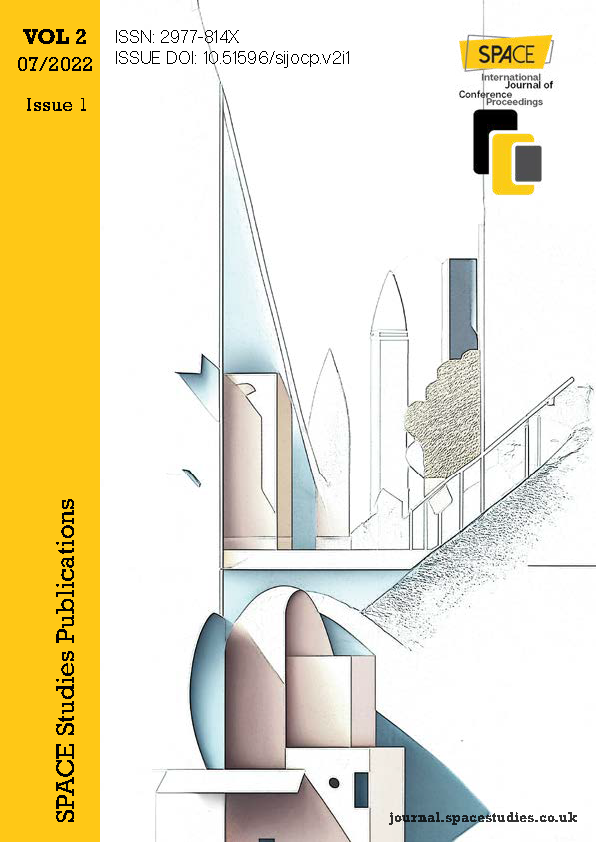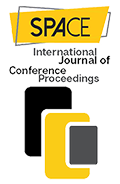Preserving the Tangible and Intangible Values of the Baltit Fort in Gilgit-Baltistan Pakistan, through Adaptive Reuse
DOI:
https://doi.org/10.51596/sijocp.v2i1.20Keywords:
tangible and intangible values, spirit of place, preservation, adaptive reuse, PakistanAbstract
Tangible and Intangible values are the distinctive qualities that, through the connection of humans with a building and its surrounding community, enable the creation of a particular link called "genius loci" that links the past to the present. In the present time, ancient buildings and sites of historical importance are the carriers of collective memories, which, together with the local characters, create this special spirit of space. Over time, these associations have become an integral part of the local community, telling a unique story.
The paper explores how tangible and intangible heritage values can be translated into a new use for a building, connecting its history to the present via a case study in Pakistan: The Baltit Fort (14th century AD). The 700-year-old fort was used as a residence until the 20th century but fell into disrepair over the years. After a restoration project that was part of the ‘Aga Khan Trust for Culture’ initiative in the northern areas of Pakistan, the building is now open to visitors as a museum.
The paper will critically examine the approaches of the adaptive reuse implied for the project to explore how the tangible and the intangible essence of the past have played a role in proposing the new functions. The study's outcome will be to see how the symbolic values of the past play an important role in giving a building a new function, preserving the spirit of the place, and preserving significant cultural assets.
References
Avrami, E., & Mason, R. (2019). “Mapping the Issue of Values.” in Values in Heritage Management: Emerging Approaches and Research Directions.
Bassa, L., and Kiss. F. (2009). “Preserving Tangible and Intangible Heritage. Shared Heritage - Common Responsibility.”
Bianca, S. (2005). “Introduction: Reclaiming the Cultural Heritage of the Northern Areas as Part of an Integrated Development Process.” Pp. 11–20 in Karakoram: Hidden Treasures in the Northern Areas of Pakistan, edited by S. Bianca and Aga Khan Trust for Culture. U. Allemandi for Aga Khan Trust for Culture.
Bianca, S. & Aga Khan Trust for Culture. (2005). Karakoram: Hidden Treasures in the Northern Areas of Pakistan. U. Allemandi for Aga Khan Trust for Culture.
Bouchenaki, M. (2003). “The Interdependency of the Tangible and Intangible Cultural Heritage.” in 14th ICOMOS General Assembly and International Symposium: ‘Place, memory, meaning: preserving intangible values in monuments and sites. Victoria Falls, Zimbabwe.
Hughes, R. (2005a). “The Restoration of Baltit Fort.” Pp. 185–214 in Karakoram: Hidden Treasures in the Northern Areas of Pakistan, edited by S. Bianca and Aga Khan Trust for Culture. U. Allemandi for Aga Khan Trust for Culture.
Hughes, R. (2005b). “Vernacular Architecture and Construction Techniques in the Karakoram.” in Karakoram: Hidden Treasures in the Northern Areas of Pakistan, edited by S. Bianca and Aga Khan Trust for Culture. U. Allemandi for Aga Khan Trust for Culture.
ICOMOS. (2008). “Quebec Declaration on the Preservation of the Spirit of Place.”
Khan, M. A. (1996). “Catching a Passing Moment: The Redeployment of Tradition.” Traditional Dwellings and Settlements Review 7(2):43–62.
Misirlisoy, D., and Gunce, K. (2016). “Adaptive Reuse Strategies for Heritage Buildings: A Holistic Approach.” Sustainable Cities and Society 26:91–98. doi: 10.1016/j.scs.2016.05.017.
Rogers, P. A. (2019). “Values and Relationships between Tangible and Intangible Dimensions of Heritage Places.” in Values in Heritage Management: Emerging Approaches and Research Directions.
Pekol, B. 2009. “Spaces or Places: Re-Use Design and Its Historical Implications.” in Revitalising Built Environments: Requalifying Old Places for New Uses. Istanbul, Turkey.
Plevoets, B., & Van Cleempoel, K. 2011. Adaptive Reuse as a Strategy towards Conservation of Cultural Heritage: A Literature Review.
Plevoets, B., & Van Cleempoel, K. 2013.“ Adaptive Re-Use as an Emerging Discipline: An Historic Survey.” Pp. 13–32 in Reinventing Architecture and Interiors: A Socia-political View on Building Adaptation, edited by G. Cairns. Libri Publishing.
Tan, L. L. n.d. Restoration and Adaptive Reuse of the Baltit Fort, Pakistan.
UNESCO. 1972. “Convention Concerning the Protection of the World Cultural And Natural Heritage.”
UNESCO. 2003. “UNESCO - Text of the Convention for the Safeguarding of the Intangible Cultural Heritage.”
Web References
https://www.akdn.org/project/sustaining-restored-monuments (Last access: 08.11.2021)
https://whc.unesco.org/en/tentativelists/1882/ (Last access: 07.11.2021)
https://www.archnet.org/sites/2701 (Last access: 07.11.2021)
https://www.gbee.pk (Last access: 07.11.2021)
https://www.hunzatourism.com (Last access: 07.11.2021)
Published
How to Cite
Issue
Section
Categories
License
Copyright (c) 2022 Syed Hamid Akbar, Bie Plevoets, Naveed Iqbal

This work is licensed under a Creative Commons Attribution 4.0 International License.













